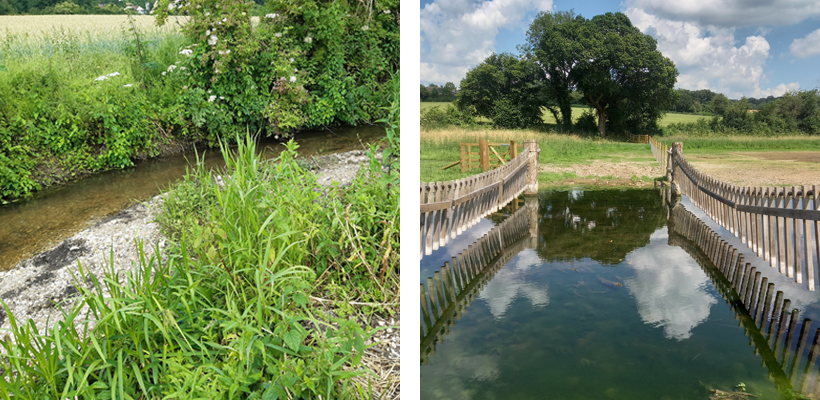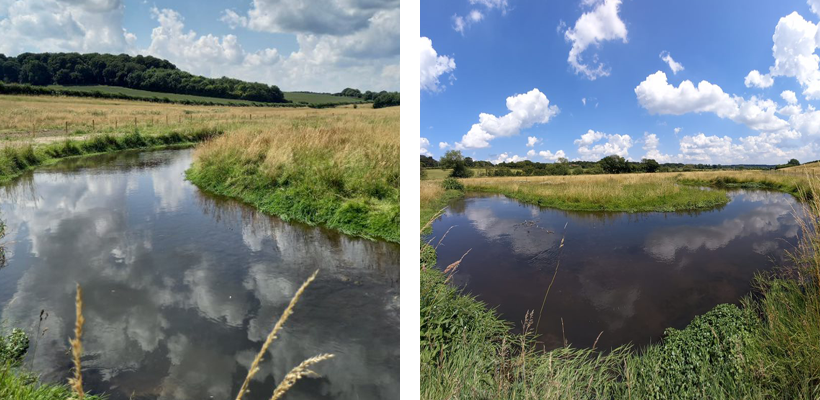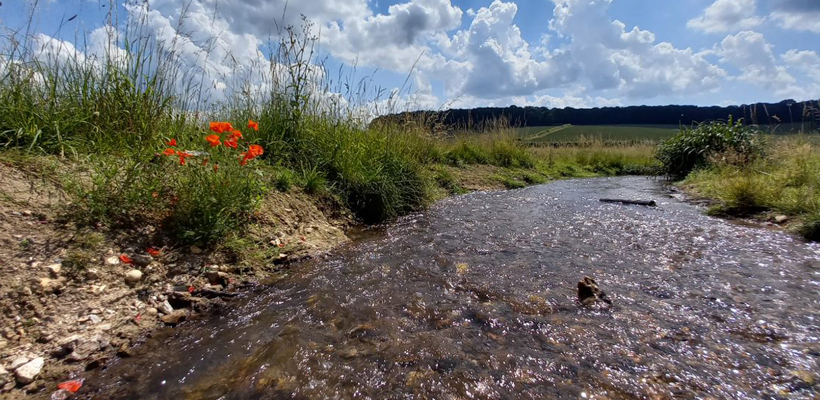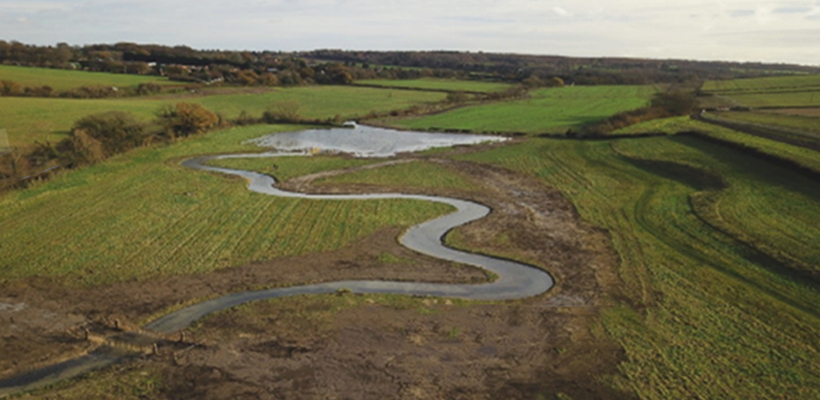We have recently completed a river restoration project on the River Misbourne as part of our Revitalising Chalk Rivers programme. Work was undertaken to improve a 1.14 km stretch of river just south of Amersham.
The existing channel between Amersham Bypass and Quarrendon Mill was straight, overwide and historically diverted from its original course in the natural valley bottom, to provide the power for Quarrendon Mill. The channel was perched, with the riverbed above the valley bottom and the chalk groundwater table.
What did we do to improve it?
A large section of the channel has now been moved to be more closely aligned to its original course, through the creation of a new 500 m meandering stream to replace the over-straightened channel. A wetland area was also established as part of the new channel to create a feature for local wildlife to thrive, as well as additional flood storage capacity in the winter months. This feature is bordered by an earth bund to prevent any potential increase in downstream flood risk as you can see in the photos below of the site on a sunny afternoon in July, post construction.
Other key features of the work included:
- Installation of in-channel enhancements in the form of gravel berms to create a more meandering form in the existing channel. A sinuous planform creates the variation in flow and the habitat more typically seen in a chalk stream.

Left: Example of one of the gravel berms in the existing channel, Right: Cattle crossing point
- Stock fencing along both riverbanks to prevent livestock trampling the banks and to reduce disturbance of bird species using the wetland area. Cattle crossing points and access gates will allow livestock to move between grazing areas.
- Sections of the grazing field have been seeded with a wildflower mix which should also encourage biodiversity at the site.

Left: Section of the new re-aligned channel with outside bend, Right: Newly meandering channel captured from the stock fencing in the background

Gravels exposed on the riverbed at the upstream end of the new channel

Aerial image of the newly constructed channel
Monitoring and evaluating our work
To assess the changes from the restoration works, we started to monitor the hydrology and ecology in and around the river restoration site prior to construction, and will continue doing so after construction. It will take some time for aquatic animals and plants to become established at the site and to be reflected in our environmental monitoring results, however a number of bird species have already been using the wetland area, such as the white and yellow wagtail and the ringed plover, with sightings tracked by the Bucks Bird Club. Eventually we will expect fish species including brown trout to migrate to the new re-aligned channel and to also spot kingfishers by the banks of the river.
This project is expected to help the River Misbourne reach the Water Framework Directive objectives of Good Ecological Status or Potential.